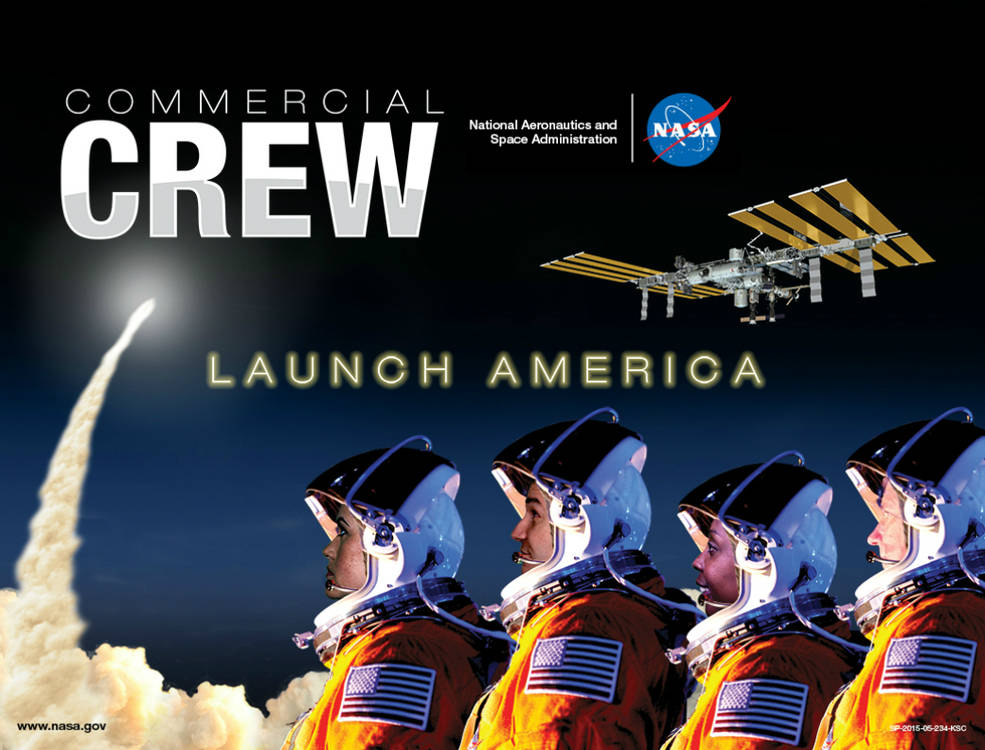
Eight months after it was shortlisted as one of two finalists in the $6.8 billion Commercial Crew transportation Capability (CCtCap) phase of the effort to return U.S. astronauts to orbit, aboard a U.S. spacecraft, and from U.S. soil, for the first time since the twilight of the Space Shuttle era, Boeing has received the first of to six orders to execute a crew-rotation mission of its CST-100 spacecraft to the International Space Station (ISS). The announcement was made yesterday (Wednesday, 27 May) by NASA and Boeing and it was noted that this and future orders will typically be made 2-3 years before flight, in order to provide sufficient time for the fabrication and integration of both the spacecraft and its launch vehicle. It was also stressed that yesterday’s decision does not necessarily imply that a Boeing vehicle will fly ahead of its fellow CCtCap finalist, SpaceX, and that “determination of which company will fly its mission to the station first will be made at a later time”. Also in May, veteran astronaut Mike Fincke—previously the Astronaut Office’s representative to the Commercial Crew Program—has been assigned as Chief of the newly formed Commercial Crew Branch.
However, the announcement is highly significant, not least in that it is the first time in history that NASA has contracted with a commercial company for a space mission intended to transport humans. “This occasion will go down in the books of Boeing’s nearly 100 years of aerospace and more than 50 years of spaceflight history,” said John Elbon, vice president and general manager of Boeing’s Space Exploration division. “We look forward to ushering in a new era in human space exploration.”
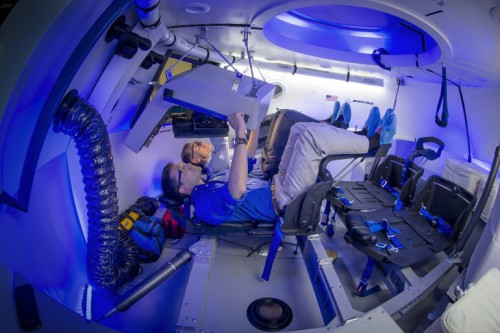
Conical in shape, the CST-100 measures 15 feet (4.5 meters) across the base of its heat shield and has the capacity to house as many as seven astronauts. Its early flights will be lofted atop an Atlas V booster—one of United Launch Alliance’s (ULA) fleet of vehicles—from Space Launch Complex (SLC)-41 at Cape Canaveral Air Force Station, Fla., which is currently receiving the first two tiers of a Crew Access Tower for CST-100 operations. Initially funded through the Commercial Crew Development (CCDev) program, Boeing received $460 million contract in August 2012 to continue work under the Commercial Crew integrated Capability (CCiCap). Two years later, it completed its CCiCap requirements on-budget and within schedule constraints and was formally identified with SpaceX as joint winner of the CCtCap contract in mid-September 2014. The total value of Boeing’s contract is $4.2 billion.
Over the past several years, the CST-100 has undergone extensive testing as part of its certification process. This has included a series of drop-tests over California’s Mojave Desert and Nevada’s Delamar Dry Lake to evaluate the performance of its parachute systems and a pad abort test—not dissimilar to the one conducted by SpaceX’s Dragon V-2, earlier this month—is tentatively scheduled for early 2017, ahead of the uncrewed and piloted test missions to the ISS.
According to NASA’s most recent Flight Planning Integration Panel (FPIP) documentation, which details the forward manifest for each of the International Partners (IPs) within the ISS Program, the first U.S. Crew Vehicle (USCV-1) is tentatively scheduled to launch no sooner than May 2018. It will embark on a mission of 181 days—spanning Expeditions 54, 55 and 56—and its four-member crew is expected to comprise three U.S. Orbital Segment (USOS) astronauts and one Russian cosmonaut. AmericaSpace understands from SpaceX that two Commercial Crew vehicles will then be flown per annum, with NASA’s strategy “likely to split that every year (one per)”, between the two companies. Under the language of the Commercial Crew agreements, Boeing and SpaceX are contracted to launch between 2-6 “standard” crew-rotation missions, each carrying “four NASA or NASA-sponsored and about 220 pounds (100 kg) of pressurized cargo,” it was noted. “The spacecraft will remain at the station for up to 210 days and serve as an emergency lifeboat during that time.”
Before either Boeing or SpaceX can begin crew-rotation missions, each must first execute an approximately 30-day uncrewed demonstration of their respective CST-100 and Dragon V-2 vehicles to the ISS, followed by a piloted test flight of about 14 days’ duration. At present, SpaceX anticipates that its uncrewed mission will occur in December 2016, followed by its piloted flight around April 2017, whereas Boeing’s schedule calls for the uncrewed mission in April 2017 and the piloted test flight in July. Both piloted flights will feature a two-person crew, with the Boeing mission expected to carry a company test pilot and a NASA astronaut. This is in keeping with the company’s flight-test heritage. However, AmericaSpace understands that SpaceX has “no current plan for a SpaceX pilot or engineer on any of the flights” and, moreover, the Hawthorne, Calif.-based launch services provider does not have an in-house “cadre of folks in training or selected”. It is believed that SpaceX originally intended to fly at least one of its own crew members on the piloted test flight, but NASA opted against this.
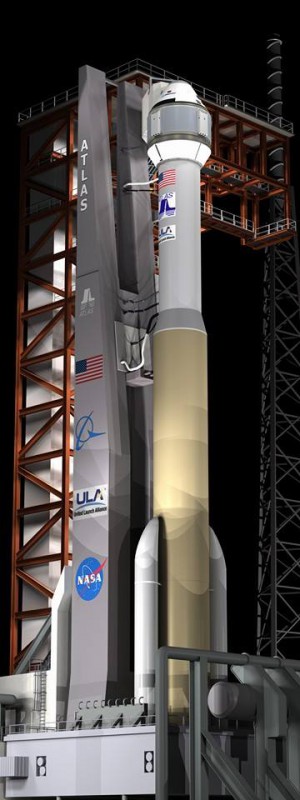
Yesterday’s announcement of Boeing as the recipient of the first order for a “standard” ISS crew-rotation mission does not necessarily imply that its CST-100 is definitely earmarked for the long-awaited CST-100 mission. Rather, it was stressed by NASA that “determination of which company will fly its mission to the station first will be made at a later time”, but that “the contract calls for the orders to take place prior to certification to support the lead time necessary for the first mission, provided the contractors meet certain readiness conditions”. Boeing recently completed its fourth CCtCap milestone—the “Delta Integrated Critical Design Review (CDR)—which “demonstrates the transportation system has reached design maturity appropriate to proceed with assembly, integration and test activities”. It must satisfactorily complete all critical milestones, before NASA will provide the final approval for flight.
“We’re on track to fly in 2017, and this critical milestone moves us another step closer in fully maturing the CST-100 design,” said John Mulholland, Boeing’s vice president of Commercial Programs. “Our integrated and measured approach to spacecraft design ensures quality performance, technical excellence and early risk mitigation.” However, it has been cautioned that if NASA does not receive full requested funding for CCtCap in Fiscal Year 2016, it “will have to delay future milestones for both partners proportionally and extend sole reliance on Russia for crew access to the station”, presenting a thinly veiled expression of NASA’s frustration at the weakening of the Commercial Crew Program budget.
“Whereas the White House substantially fortified the CCP program, the House committee wipes out most of the increase,” explained AmericaSpace’s Ken Kremer in a recent article. “CCP got a hefty and much-needed increase from the administration of nearly 50 percent from $805 million in FY 2015 to $1.244 billion in FY 2016. In reality, that only partially makes up for substantial cuts by the Congress, which has not fully funded the administration’s CCP funding requests since its inception in 2010…The net effect of Congressional CCP cuts has been to prolong U.S. sole reliance on the Russian Soyuz manned capsule at a cost of hundreds of millions of dollars.”
Back in January, at a press conference in Building 9 at the Johnson Space Center (JSC) in Houston, Texas, NASA Administrator Charlie Bolden told his audience— with only the slightest trace of humor—that “I don’t ever want to have to write another check for Roscomos”. Indeed, USCV-1 is expected to mark the beginning of the end of the highly controversial and politically awkward U.S. reliance upon Russia for seats aboard their Soyuz spacecraft. By the time Boeing’s CST-100 and SpaceX’s Dragon V-2 are operational, it will be possible to expand the USOS from its current complement of three astronauts to four, effectively doubling the available crew time for science from 40 to 80 hours per week. “Commercial Crew launches are critical to the International Space Station Program, because it ensures multiple ways of getting crew to orbit,” explained ISS Chief Scientist Julie Robinson. She added that increasing the USOS crew size would allow NASA to “complete a backlog of hands-on critical research that has been building up, due to heavy demand for the National Laboratory.”
With the order of the first CST-100 for ISS crew-rotation now in place, it is expected that SpaceX will follow in the summer, by which time it can be expected that the first NASA astronauts will be assigned to the piloted test flights. Speaking back in January, JSC Director Ellen Ochoa said that an initial cadre of astronauts would be named first, and from that pool the first crew would be assembled. In order words, she did not expect individuals to be announced in the first instance—as was the modus operandi throughout the Space Shuttle era—but instead would be selected from within the cadre.
Names have yet to be announced, but seated on the stage with Dr. Ochoa and other senior NASA, Boeing and SpaceX leaders in January was veteran astronaut Mike Fincke. A retired Air Force colonel, he is currently the most experienced U.S. spacefarer, with over 381 days of experience, spread across two long-duration ISS expeditions and the final voyage of shuttle Endeavour. Fincke also stands in ninth place on the list of the world’s most experienced spacewalkers, with 48.5 hours in nine career EVAs. Until recently, he was the Astronaut Office’s representative to the Commercial Crew Program—and in some circles was seen as a likely contender to draw assignment to one of the early missions—but in May 2015 it was noted that Fincke has been named Chief of the Commercial Crew Branch.
According to a source close to the Astronaut Office, this branch was formed relatively recently, emerging from with the Exploration Branch, which is presently headed by veteran astronaut Rex Walheim. “Its separation indicates that there will not only be hardware inputs, but actual training,” the source told AmericaSpace, adding that Fincke’s appointment to head the new branch “rules [him] out for either of the test flights, but it seems to rule him in for one of the ISS Expedition visits, using either Dragon or CST-100”. It was also suggested that veteran astronaut Eric Boe—who recently ended a three-year rotational tenure as Deputy Chief of the Astronaut Office, with Commercial Crew as one of his oversight responsibilities—may be a prime candidate for one of the NASA slots on either of the piloted test flights. Other suggested candidates could include Tony Antonelli, Randy Bresnik and Drew Feustel, together with Suni Williams and Jeanette Epps.
Be sure to “Like” AmericaSpace on Facebook and follow us on Twitter: @AmericaSpace
.




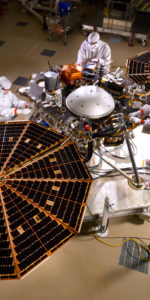
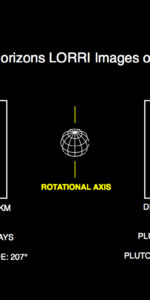
Thanks for that Ben.
Before the usual hate mail ensues, I would remind gentle readers that this is ostensibly a Commercial Crew Program, there is nothing preventing the two contractors from investing more of *their own money* in the vehicles to speed things up, especially the aerospace mega-giant Boeing.
That would depend on the goals of the company involved. If it is to have crew flights ASAP, then you are correct. If it is to milk the taxpayers via NASA for every possible dollar, then stretching it out makes perfect sense.
My opinion is mostly not shared by others here, so I’m not going to push it too far. I think that Commercial Crew will be a better value per taxpayer dollar than Orion and its’ SLS launcher. That’s called damning with faint praise.
IMO, internal funding could have had a Boeing or Lockmart manned capsule flying on an EELV well before Shuttle termination. I would have called that true commercial. They seem somewhat unwilling to take that step.
SpaceX is only recently a contender and it will be interesting to see if they go down that self funding path when there is a NASA carrot out there for a slower pace. I am a fan of the company, but I don’t see them moving faster than the carrot, even if the capability is there.
” If it is to milk the taxpayers via NASA for every possible dollar, then stretching it out makes perfect sense. ”
How would that help them get more money? The longer the project takes, the more they spend in overhead, eating into the profits to be made from the fixed-price milestone award. At best, they’d pare down staff to match the pace of a delayed award date to minimize their reduction in profit, but since it’s a fixed-price milestone awarded contract they don’t stand to profit from delays as would a cost-plus contractor.
If they don’t bieve there is a commercial market, and they spend their own in advance of NASA funds, the program could get cut before they recover their investment. If they really believed in a non-NASA market, then and only then would a speed up make sense from an ROI standpoint.
Good news for Boeing and America – but they’ll still be flying on Russian engines (interesting that this is not mentioned).
If Putin continues to invade and threaten his neighbors, Congress may restrict NASA’s use of RD-180 too.